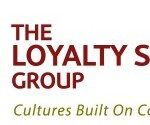
Customizable Workshop Offer
October 6, 2014
The Speed of Trust [cliff notes]
November 15, 2014THOUGHTS ABOUT THE BOOK F.I.R.E.
By Dan Ward
How Fast, Inexpensive, Restrained, and Elegant Methods Ignite Innovation
I was discussing my concepts for building innovative organizational environments with a friend who works at Microsoft, when he asked me if I had read F.I.R.E. – He stated that he would be interested in my thoughts about Dan Ward’s methods of using the culture built on being Fast, Inexpensive, Restrained, and Elegant to manage innovative designs and outcomes. I read the book, and for the following reasons I believe F.I.R.E. is a must read if you are into creating innovative cultures, and if you are looking for methods that achieve high levels of successful innovation.
Mr. Ward is steeped in our nation’s military industrial culture as well as NASA innovation culture, and provides a unique and thought provoking perspective toward our country’s continuous effort to produce technological breakthroughs that lead the world in innovation. Mr. Wards evidences a strong opinion and confronts, head on, the concepts of “Continuous Improvement” “The Incremental Scientific Process”, The Engineering Process Analysis” and the basic concept of being the world’s leader in all things.
“There is a widespread belief that superiority results come from complexity. Make a system too simple and affordable and nobody will buy it, even if it is better.” [pg. 104]
I contend that you can judge an organizational culture by understanding 4 simple things:
1. In all organizations, the Individual behaviors of leadership and stakeholders define culture.
In all organizations, people take their lead from the behaviors of others. If the soap opera about the organization is ever-present, the culture will revolve around the gossip. If the Leadership does not demonstrate listening, then the culture will not value listening. Mr. Ward’s focus on Fast and Inexpensive was at odds with the long history of how our Military and NASA employees think: big and more complicated was always better.
2. In all organizations, processes and protocols create the level of bureaucracy, and bureaucracy controls the speed and quality of results.
When doing long term and very expensive projects, command and control organizations have implemented vast reporting systems – established to make sure the mistakes of the past are not capable of repeating in the future. This often results in changing policies and oversight procedures by creating new rules to stop the exception. So one person messes up and every one is treated as if they were that person. There is nothing worse in organizational processes than creating new rules because of an exception.
3. In all organizations, “Decision Competency” is a critical element of the culture.
For this conversation, Mr. Ward has several interesting concepts that are worthy of discussion: Brainstorming is one of the primary ways that organizations try to engage staff in building ownership and accountability. Mr. Ward’s view of this effort is that it only adds complexity and the true test is not the number of ideas that are generated, it is really the number of ideas that should be discarded. Simplicity vs. Complexity.
Count Something – here, Mr. Ward offers 5 concepts that help factor into the decision matrix. “Count something that big projects and big teams have a had time keeping track of anything – count # of meetings, team size, quick wins, count things that will determine success. Do it publicly. Data about your project should be hard to miss, not hard to find, make sure the whole team puts their eyeballs on the numbers.”
Track Trends, “not just the figures. The past helps us know where we might be going. This observation can help shape the future.”
Focus on Critical figures. “The traditional program management discipline is full of clever sounding approaches. Don’t fall for them. It is important to make sure the things you are counting really count.”
Focus on meaning more than precision. “Use your measurements to complement qualitative insights, not to do away with them.”
A last concept around decision making: Mr. Ward quotes a Mr. Atkins’ team approach that focused on “Capabilities, not Requirements” Don’t throw away something that works well just to create a more complicated solution, especially if the requirements are complicated.
4. Finally: in the end, the most important element of an innovative culture is that all participants are “ALL IN” at accomplishing the organization’s mission and desired outcomes.
The most fundamental factors in any innovative organization will be Clear Expectations about individual behaviors – clearly defined processes and company protocols that everyone understands and trusts, and Decision Competency – understanding that all great decisions are made on the last day. Building this collaborative innovative culture will not be the effort to define the bureaucracy as the problem but it will be what creates the answer. “Bureaucracy” is defined as the “Administration function of organizations.” Mr. Ward offers a refreshing counterbalance to our country’s biggest Bureaucracies: all organizations require Bureaucracy and it does not have to be dysfunctional, it can be supportive, even become the reason that great innovation takes place.
Again I strongly recommend reading F.I.R.E. by Dan Ward.





